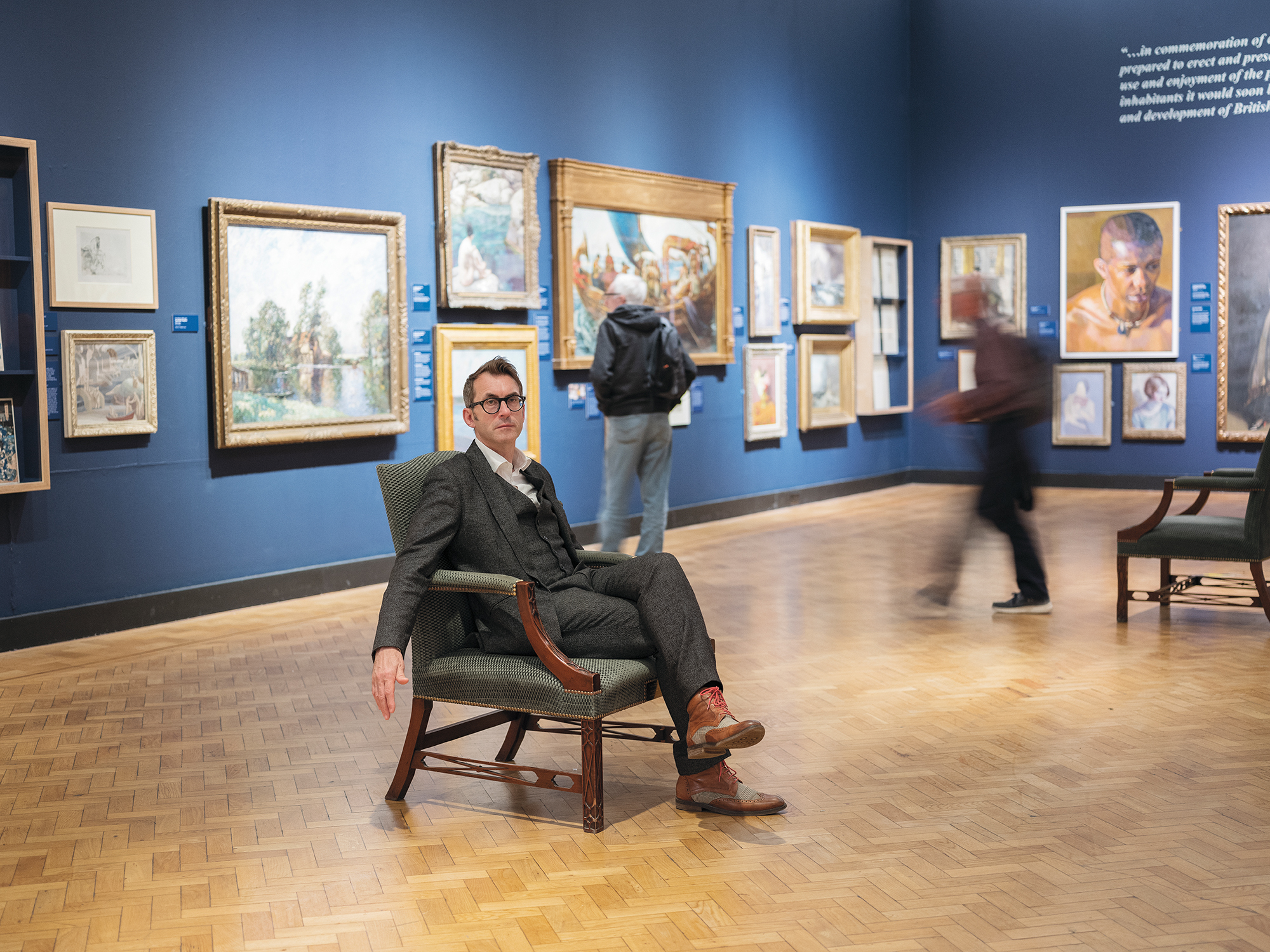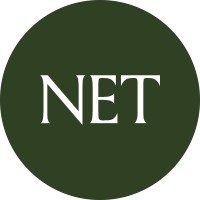Spreading the Gospel
The Lindisfarne Gospels are coming home. Displayed in an atmospherically-controlled clear box, which has taken months to transport and install, the 1300-year-old manuscript is the centre piece of the Laing Art Gallery’s exhibition. It opens on September 17 and you have until December 3 to see it. The British Library has entrusted the rare appearance of this precious and delicate historical document to Tyne & Wear Archives & Museums (TWAM), following Durham Cathedral, which opened its beautiful pages to a curious and relentless public in 2013. The Lindisfarne Gospels Exhibition is arguably one of the biggest cultural events in the UK this year – and certainly in our neighbourhood – and is expected to attract hundreds of thousands of visitors, many from outside the region. But there is so much more to the Gospels’ return and display than its entrancing, centuries-old mosaics. As Colin Young finds out, for TWAM director Keith Merrin, the Lindisfarne Gospels offer the opportunity to spread the word from the North East once again.
Keith Merrin loves noise.
He is the head of nine museums across the North East, and mountains and streams of physical and digital archived materials.
We are sitting for our interview in the Laing Art Gallery cafe, where the softly-spoken Keith is competing with the constant hisses and bangs of the coffee machine alongside the sounds of dozens of schoolchildren, who have been invited to sing and perform in the foyer.
And Keith, who is director of TWAM – Tyne & Wear Archives & Museums – could not be happier.
“My office is up on the fourth floor of the Discovery Museum,” he says.
“I really noticed it when the schools came back after we’d reopened.
“When they come up the stairs in the corridor right next to my office, it sounds like a herd of elephants.
“And it always brings a massive smile to my face.
“Our museums were quiet for far too long.”
Keith has been director of TWAM for more than a year now, and most of that time has been spent working from home, visiting TWAM’s nine locations or finalising the return of the Lindisfarne Gospels.

“When I first arrived, all the museums were still closed,” he says.
“I couldn’t meet any of my new colleagues because everybody was working from home.
“It was literally sitting in my spare bedroom one day on one laptop, and the next day, sitting in my spare bedroom on a different laptop.
“And that was the change in my job.
“Then there were all the things that went along with that; worries about finances, all the time our venues were shut we weren’t generating any income, but we still had quite significant cost pressures.
“Clearly, we couldn’t deliver as normal; we were having to reschedule and change exhibitions, change programmes.
“There were genuine worries if visitors would come back at all.
“We were incredibly lucky the Government released the Culture Recovery Fund, which was an absolute lifeline to our sector, in terms of being able to cover some of our losses, because we were one of the hardest hit sectors.
“People could still go to the shops and spend, even pubs were able to do outdoor drinking or ordering in; we were just shut.
“That was a difficult time but, at the same time, the great thing about TWAM is that it has this massive footprint across the region.
“It’s really well loved. People in all our different communities love their local museums.
“It’s been very challenging at times, but it is also incredibly uplifting to see the reaction of people since they’ve been coming back.
“We had to adapt.
“When schools were back, but we weren’t open, we delivered things online, like an Ancient Egypt study day from the Great North Museum.
“We had 4000 kids online, from all over the country.
“But there’s something about museum spaces; these civic spaces allow people from all backgrounds to come and mix together, to do their own thing while being part of something collective.
“I find it incredibly uplifting – it’s quite rare in society now.
“When something is taken away from you, you appreciate it more when it comes back.
“And also, you just see how important we are to people.
“It gives you that extra edge to do well.”
Away from the hubbub of the cafe, we head behind the scenes for a photoshoot.
This is, of course, familiar territory for the director of TWAM, and across the North East there are dozens of rooms and corridors – rows of paintings, drawers and cabinets full of artefacts of every description and era, and countless historical documents.
But even Keith seems surprised by some of the discoveries before us. Especially the swords.
“I honestly didn’t realise we had so many,” says Keith.
He gives us a fascinating half-hour impromptu tour, and it’s reassuring that if these are the items in store, how powerful must those on display be across TWAM’s nine museums?
But we are not here to discuss these secreted items – although they are on Keith’s post-pandemic agenda.
The Lindisfarne Gospels are coming home.
The three-month exhibition in the Laing Art Gallery is three years in the bidding, fundraising, planning and delivery.
It has taken nearly six months to move the most spectacular manuscript to survive Anglo-Saxon England from its home in the British Library to the region.
Every step of the ancient book’s journey has been meticulously planned and monitored, and it must reside in an atmospherically-controlled clear box for the duration of its stay before it returns to London in December.
The Lindisfarne Gospels’ reappearance, so close to their creation, is deserved reward for TWAM and its partners, who had to sustain their belief in the project throughout COVID-19 without knowing if the exhibition would even be open to the public.
Keith says: “We invested a lot of time in planning the project and in writing applications to raise the money we needed, but without really knowing whether we would ever do it.
“So we had to take some big leaps of faith, but it has paid off, and we’ve been able to deliver the exhibition and community and learning programme in full.
“Part of my job has been to keep everybody holding their nerve, if you like, and being steady and keeping all of our partners, the stakeholders, on board, like the National Lottery Heritage Fund and the North of Tyne Combined Authority, who have been brilliant in supporting us.

“When we deliver the Gospels, it’s going to be amazing, and it’s going to drive a lot of visitors.
“People in government talk about this as one of the key events in the country this year alongside the Commonwealth Games.
“This is a real coup for Newcastle.”
TWAM won the right to follow Durham Cathedral’s hosting of the book nine years ago following an extensive report into the Gospels.
It promised to deliver an ambitious exhibition that would encapsulate their contemporary significance.
The exhibition opens with an immersive digital experience, including early medieval treasures brought together from across Britain, representing both personal and collective religious experiences in the eighth century.
Turner Prize-winning artist Jeremy Deller has been given free rein to create his interpretation of the Gospels, but equally fascinating is the specially-commissioned ‘These Are Our Treasures’ community exhibition.
Keith says: “We went to libraries across the region, as part of the wider reach-out to take the Gospels into communities and schools, talking about the Gospels being a treasure of the North East, and asked, ‘what is your treasure?’
“Some really interesting things came out of that – war medals, an ironing board, all sorts – it was fascinating.
“Yes, the Gospels are an important part of our history, but also the story of creativity, the story of sacred treasures, the story of the significance of objects in people’s lives.
“It is still a contemporary topic, as is that connectivity to the wider world.
“One of the things we forget in the North East is that, in the seventh century, we were absolutely connected into a worldwide network, of learning, of communication, of exchange, via the Catholic Church, the monastic network.
“I come from Jarrow originally, and Bede was sitting in Jarrow in the seventh century, writing about mathematics, astronomy, science and poetry, as well as religion, and helping make sense of the world, not necessarily just for people who lived locally, but for people across Europe too.
“And he was in correspondence with people all over Europe, and all over the world.
“So, the Gospels aren’t just something that were tucked away on the isle of Lindisfarne, they are something that represents a time when the North East was absolutely the centre of European learning and power.
“We wanted to reference that the North East is absolutely connected to the rest of the world.
“In many parts of life now, we are world-leading.
“The North East is a centre of excellence around certain things. That chimed with local stakeholders and the British Library too.
“I suppose a lot of their main motivation was, ‘who’s going to look after the Gospels best, and ‘who’s going to get them to the widest possible audience?’
“And what TWAM is brilliant at is presenting things in a way that audiences can engage with.
“One of the things we were really keen on was that it isn’t just the book in a box.
“We know people will come to see the Gospels, but it is about so much more than that.
“The most important thing is that people feel inspired by the Gospels; how they are inspired doesn’t really matter, but we hope they go away thinking, ‘wow, that’s amazing’.
“Maybe the art will inspire them to draw or paint, or think, ‘that’s amazing because of the religious significance of it’, or it inspires them to explore their spirituality in whatever form that takes?
“We are particularly keen that people think about the role of the North East in the wider world, and how coming from here is really special.”
Keith is now into his second year as TWAM director, and while he may have inherited the Gospels’ return, he has been at the forefront of cultural developments across this region for a number of years.
As director of Bede’s World, in Jarrow, he oversaw the bid to have the Wearmouth-Jarrow Anglo-Saxon Monastery nominated as a UNESCO World Heritage Site, so he was certainly no stranger to the importance of the manuscript.
He was previously chief executive of Sunderland Culture too, a unique regeneration company, which, under his stewardship, saw a dramatic increase in the city’s cultural profile and infrastructure.
Before that, as director of the Woodhorn Trust, in Northumberland, he brought the hugely popular Poppies: Weeping Window installation to the North East, and launched the multi-million-pound Bait programme to bring arts experiences to communities across the area.
And the Lindisfarne Gospels exhibition comes hot on the heels of ‘Hadrian’s Wall 1900’ – a hugely successful year-long festival that has attracted thousands of British and international visitors to TWAM’s three venues on the World Heritage Site.
Keith says: “Our venues are well-loved.
“People like what we do; we are a force for good in the region, for getting people back out into the city centres and into communities.
“When I came in, I could see the potential of what we could do, at the same time as having to deal with the day-to-day issues of the initial outcomes of COVID-19.
“Because we’re in the North East, we forget, or we don’t really necessarily realise, that TWAM is one of the biggest museum services in the country and, in my sector, this is one of the biggest jobs I could take.
“Therefore, when it came up, I was absolutely keen to get it because it’s a huge organisation, which has the power to make a massive impact on communities across the North East, and be an exemplar across the country.
“We’re in a quite interesting phase now.
“All our museums and galleries are back open, people, and schools in particular, are visiting, and we’re back at 60 to 70 per cent levels, which is brilliant.
“But it is quite a complex picture as to why people are not coming back, and we have done some quite extensive research.
“Some people, who used to come and visit us, are reticent about coming back because they’re still nervous about COVID-19, and may have long-term health conditions.
“And so they’re saying, ‘we want to know there are lots of restrictions in place’.
“And some are saying, ‘we came back, it wasn’t much fun because of the restrictions – we don’t want restrictions in place’.
“If you’ve got small kids, when you go to the Great North Museum, part of the fun is them running around, pressing all the buttons and seeing things happen – suddenly they had to rigidly follow a one-way system and not touch a lot of things.
“We know they are saying, ‘yeah, it was brilliant to be open, but it wasn’t quite the same’.
“And we get that.
“Thankfully, almost all our interactive exhibits are now back in action.
Keith adds: “We’re now thinking about what we could be doing differently.
“What can we do now to support the rest of our communities?
“Whether it’s businesses, getting people back into the city centre, communities struggling with poverty, people affected by health inequalities, mental health or racism – we’re looking really closely at that.
“We’ve got amazing resources, wonderful artworks, historical collections, incredible stories.
“The question now is how can we use them to really support everybody in their recovery from the pandemic?”
September 7, 2022
- Arts & Culture
- Business & Economy

